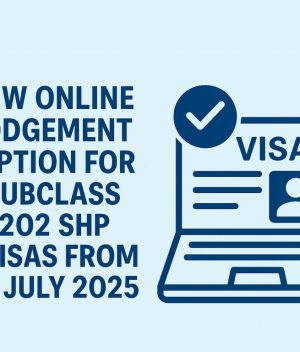Partner Visa Evidence: Key Information for a Strong Application
If you are uncertain about any part of the application process, it might be helpful to consult with an immigration lawyer or a registered migration agent.
Applying for a partner visa can be an emotional journey, filled with hope and anticipation.
No matter if you are seeking an onshore or offshore partner visa, it is important to collect the appropriate documents and evidence.
This guide will help you understand the partner visa requirements and how to strengthen your application with the necessary partner visa evidence.
Understanding Partner Visa Requirements
When applying for a partner visa, you must demonstrate a genuine and ongoing relationship with your partner.
The Department of Home Affairs evaluates your application by looking at various factors, like your relationship history, financial obligations, social standing, and household situation.
These are often referred to as the “four pillars of relationship.”
Demonstrating a Genuine Relationship
To prove your relationship is real, you need to provide clear partner visa evidence. This should show how strong your connection is. This includes documents that show how long you have been together.
It can have photos, messages, and testimonials from family or friends who know you both well.
Importance of Relationship History
A compelling relationship history is a cornerstone of your application. This includes evidence of how and when you met, significant milestones, and how your relationship has developed over time.
Include photos, communication logs, and any documentation of life events you have shared. This not only adds depth to your application but also reinforces the sincerity of your connection.
Financial Commitments and Responsibilities
Financial interdependence is a critical component of your application. Demonstrating shared financial responsibilities can be achieved through joint bank accounts, shared bills, and financial agreements.
It’s not just about showing money transactions but illustrating how financial decisions are made together, reflecting a partnership in life and finances.
Creating a Partner Visa Checklist
To ensure your application is comprehensive, create a partner visa checklist. This will help you track all the necessary partner visa documents and supporting documents you need to gather.
Comprehensive Identity Documents
You must submit identity documents for both partners. This includes passports, birth certificates, and national IDs. These documents are part of your partner visa evidence.
Ensure these documents are current and certified, as original copies may be requested at various stages of the process.
Detailed Relationship Evidence
Relationship evidence should be detailed and varied.
This involves providing not only combined financial records and pictures but also a shared travel log and statements from friends or family members.
Each piece of evidence should support the narrative of your relationship and demonstrate its depth and complexity.
Character and Health Assessments
Mandatory character and health assessments are part of the application process. Police checks and medical exams should be completed early to avoid delays.
Ensure these assessments are recent and cover all countries where you have lived for extended periods. Make sure to submit these as part of your partner visa evidence to demonstrate your eligibility.
Supporting Documents for a Strong Application
The evidence you provide should paint a clear picture of your relationship.
Quality matters more than quantity, so focus on providing detailed and relevant documentation. Here are some tips for organizing your partner visa evidence:
Comprehensive Financial Evidence
Comprehensive financial evidence should include joint bank account statements that demonstrate shared expenses and any financial support you have provided each other.
Lease agreements or mortgage documents in both names are also valuable. These documents should illustrate financial interdependence and shared life goals.
Detailed Household Evidence
Proof of a shared household should consist of utility bills or insurance policies with both names, along with photos of shared living spaces to demonstrate the authenticity of the household.
This evidence demonstrates your day-to-day living arrangements and shared responsibilities, further supporting the authenticity of your relationship.
Robust Social Evidence
Social integration is essential for proving your relationship’s authenticity. Provide shared travel itineraries, invitations to joint events, and photos from family gatherings to support this.
This social evidence is an important part of your overall partner visa evidence.
In-Depth Commitment Evidence
Commitment evidence should include personal statements detailing the nature of your relationship and future plans.
Copies of communications, such as emails or messages that reflect your relationship’s depth, are also crucial.
This evidence should capture your emotional bond and long-term intentions.
Understanding Onshore and Offshore Partner Visas
The partner visa application process may differ slightly depending on whether you are applying for an onshore partner visa (subclass 820/801) or an offshore partner visa (subclass 309/100).
Understanding these distinctions is crucial for a smooth application process.
Onshore Partner Visa (Subclass 820/801)
If you are applying while in Australia, you will be seeking an onshore partner visa. This allows you to stay in the country while your application is being processed. The process involves two stages:
- Temporary Partner Visa (Subclass 820): This is granted first, allowing you to live in Australia. Maintaining a continuous relationship during this time is important.
- Permanent Partner Visa (Subclass 801): After two years, if your relationship is still ongoing, you can be considered for permanent residency. This stage requires updated evidence to confirm the continuity of your relationship.
Offshore Partner Visa (Subclass 309/100)
If you are applying from outside Australia, you will pursue an offshore partner visa. Similar to the onshore application, this process also involves two stages:
- Temporary Partner Visa (Subclass 309): Allows you to enter and stay in Australia. This stage requires thorough documentation to establish the validity of your relationship.
- Permanent Partner Visa (Subclass 100): Granted after the relationship continues for two years post-application. Continuous evidence of your relationship is necessary to transition from temporary to permanent status.
Key Differences and Considerations
Recognizing the main distinctions between onshore and offshore applications can help avoid delays.
Each has unique requirements regarding processing times and conditions, so it’s essential to plan accordingly.
Additionally, consider the impact of your application location on your ability to travel and work during processing.
Highlighting De Facto Relationships and Evidence
A de facto relationship is recognized as a relationship where you and your partner are not married but live together as a couple.
To form a de facto relationship, you must demonstrate that you have lived together for a minimum of 12 months before applying for the visa.
Evidence for Cohabitation
Proof of cohabitation, such as rental agreements or mail addressed to both partners at the same address, is vital. These documents confirm your shared life and commitment. They are critical partner visa evidence for de facto relationships.
Financial and Social Integration
Demonstrating financial and social integration is crucial. Evidence of shared financial responsibilities and joint purchases shows a commitment to a shared life.
When friends and family express their support for your relationship status, it validates your claim and shows that your social circle acknowledges your relationship.
Overcoming De Facto Challenges
De facto relationships may face unique challenges, especially if you’ve been apart due to work or study.
Provide explanations and supporting evidence, like travel itineraries or communication logs, to demonstrate ongoing commitment during periods of separation. This will strengthen your partner visa evidence.
Tips for a Successful Application
Be Thorough and Honest
Accuracy and honesty are paramount in your application. Any discrepancies or false information can lead to delays or even visa refusal. Ensure all documents are up-to-date and clearly labeled. Double-check every detail to prevent errors that could impact your application’s success.
Use Professional Help If Needed
If you’re uncertain about any aspects of the application process, it might be a good idea to speak with an immigration lawyer or a registered migration agent.
They can provide valuable guidance and ensure you meet all partner visa requirements. Their expertise can be particularly beneficial in navigating complex cases or understanding specific legal requirements.
Stay Organized
Keep copies of all documents and communication related to your visa application. Being organized will help you track your progress and respond quickly to requests for additional information.
A well-organized application with clear partner visa evidence can significantly enhance your chances of success.
What Happens After You Apply for a Partner Visa?
Once your application is submitted, it will undergo a review by the Department of Home Affairs.
The processing time for a partner visa can vary depending on your situation. During this time, the Department of Home Affairs may request additional details or documents.
They may also ask for updated relationship evidence if your application takes longer to process. It’s essential to respond promptly to any requests to avoid delays.
After processing, you will receive a decision on your application. If approved, you will receive a temporary partner visa (if applying onshore).
This visa allows you to stay in Australia while your permanent visa is being processed. If your permanent visa is approved, you will be granted permanent residency status in Australia.
Why Choose Emigrate Lawyers?
At Emigrate Lawyers, we specialize in partner visa applications and understand how important it is to present strong, well-organized evidence.
Our experienced legal team is committed to guiding you through every step of the process—whether you’re applying onshore or offshore, as a married couple, or in a de facto relationship.
We take pride in crafting decision-ready applications that meet all legal requirements and highlight the genuine nature of your relationship.
With a focus on personalized service, clear communication, and a 99.99% success rate for partner visas to date, we’re here to help you build your future together in Australia with confidence.
Conclusion
Strengthening your partner visa application with the right evidence is crucial for a successful outcome.
Gaining insight into the partner visa criteria, concentrating on the four key areas of the relationship, and methodically arranging your supporting documents can enhance the likelihood of a seamless and successful application process.
Whether you are applying for an onshore or offshore partner visa, it is crucial to prepare thoroughly to demonstrate the authenticity of your relationship and your commitment to one another.
Keep in mind, that the journey might be tough, but with the right mindset, you can look forward to creating a future together in Australia.
Putting in the work to create a thorough and truthful application will be rewarding, opening doors to a new phase in your life.
Related Content –





